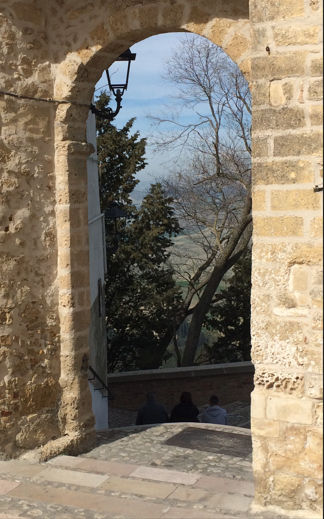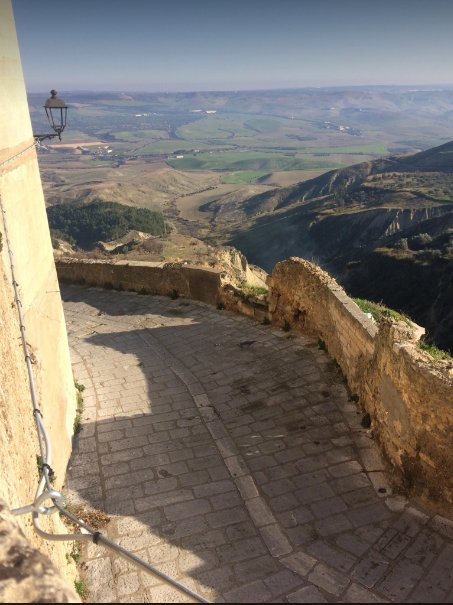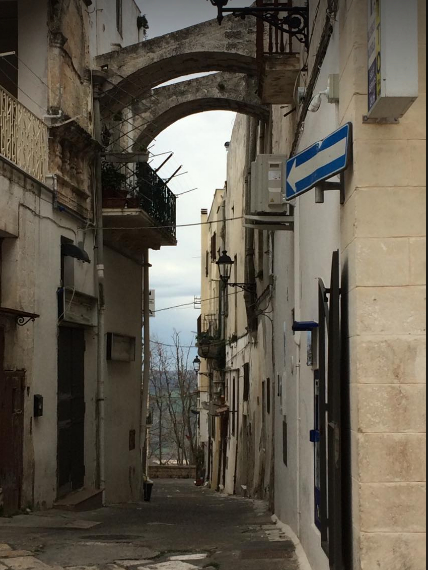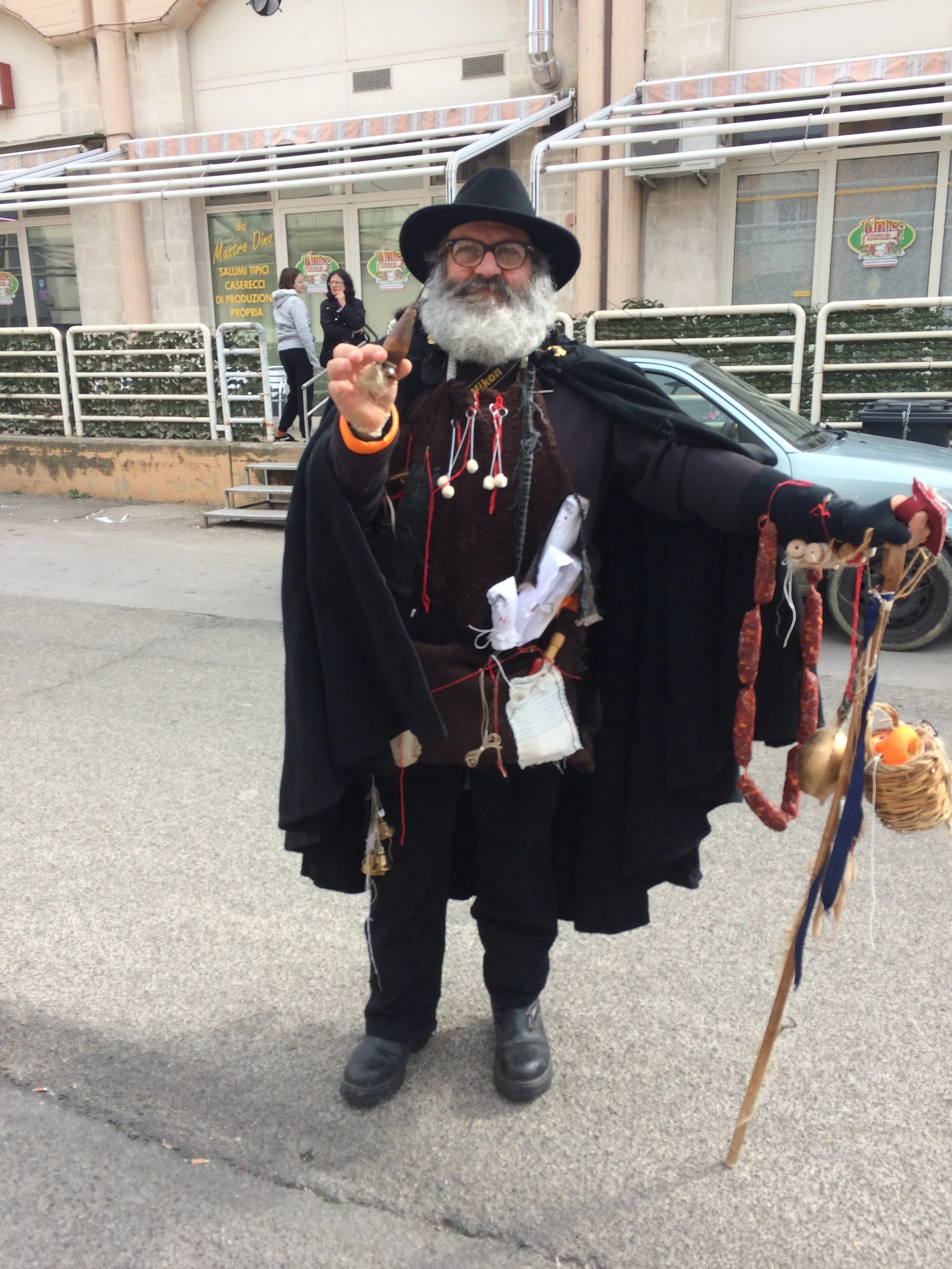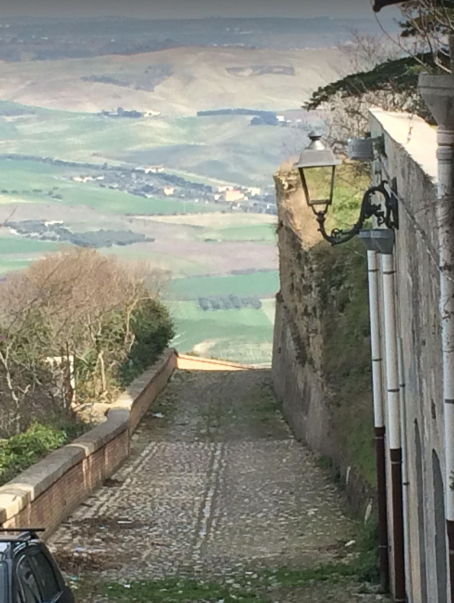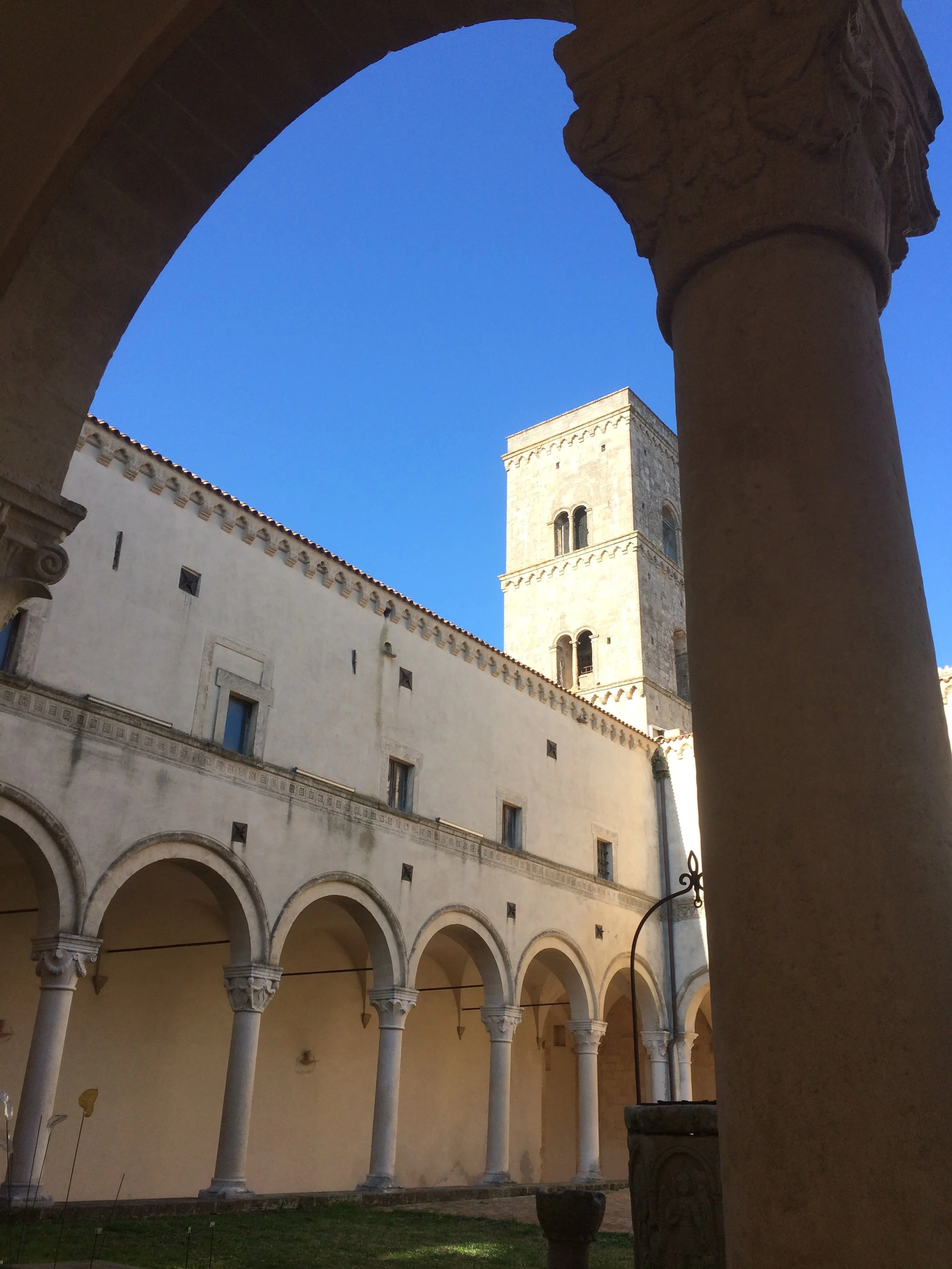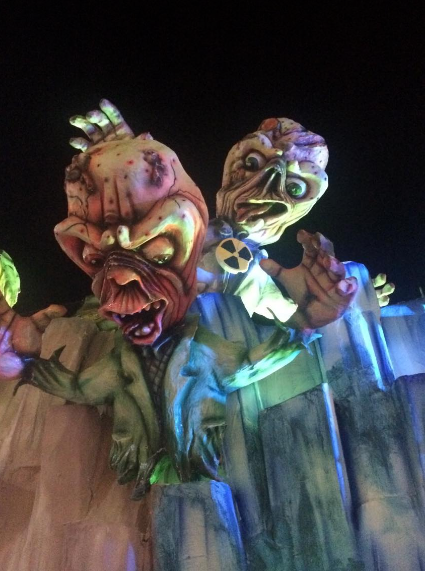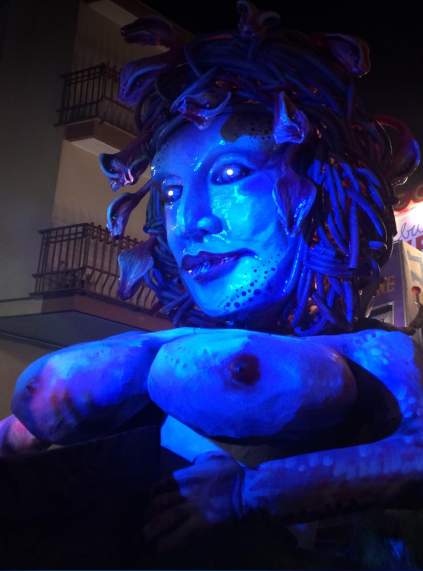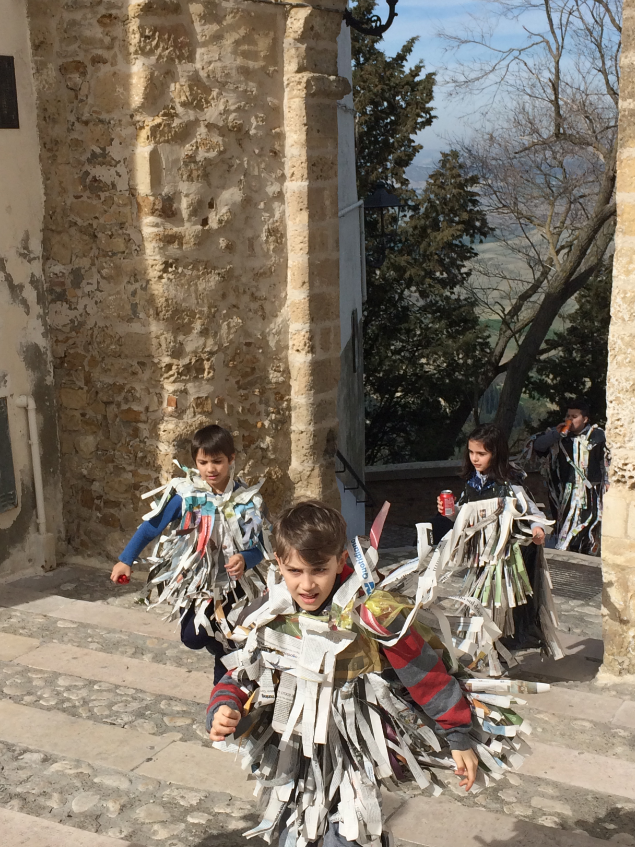Naked Women, Secret Passages, and Monasteries in Italy
The one about an Italian sabbatical, medieval monasteries, secret passages and mysteries, near naked women with big boobs, and pocket coffee.
January 2020
Covered in a netted hat, the bees are buzzing around me.
Delicately I ease the honeycombed frame out of its beehive box. Beyond there’s a vista across the valley around this little village in the southern Italian countryside.
Once I have finished with the bees I’ll be with Maria to learn how to make the little cavatelli pasta shapes, then no doubt another incredible pasta sauce which will cook for 2 hours – that’s the secret to making them taste so good. In the afternoon I will spend more time with Luca to keep working on my Italian, and tomorrow I’ll be with the goats and learn another new local craft for the tourist shops.
At least, that’s how my imagination ran, my stomach doing backflips in excitement.
In February 2019 I had seen an ad for WonderGrottole, a project to rehabilitate a dying village. They were looking for four people for a ‘sabbatical’ – three months with food and accommodation, incredible traditional experiences, even a bit of pocket money, and all you had to do was come up with cool ideas to attract tourists. Mine was to do a historical and cultural treasure hunt though the village – figure out the clue to find the next piece of village story.
There are about 2,500 of these little villages in Italy which are dying. The young leave to find work opportunities. Grottole is a village of 2000, with over 600 abandoned houses. Wondergrottole was looking for innovative ways of saving their village.
I spent a week refining my CV and honing my letter of introduction before sending it off.
As did one or two others.
For these four positions (they ended up choosing five people) they had a mere 280,000 applicants. I was one of the the 279,995 not chosen.
Just under a year later I am on a bus, nose pressed against window.
It’s January 2020.
I have been watching the news since September on the bushfires raging in Australia. Meanwhile there has already been that first report from China of a new virus.
But I am on my way to Italy after a wonderful week with an old and special friend in Germany.
An ancient Roman-Jewish purifying pool near Mannheim (for baptisms, and girls to cleanse themselves after their periods before entering the temple again), because in the land of Beethoven and Bach, Roman ruins is exactly what you expect to find.
Where do these friends come from? The oddest of places. Where else does one make a firm lifelong friend from Germany but in countryside Japan. We first met in 1989, shared many onsen (hot spring baths), mountain adventures, and breakfasts that lasted all day. Now, some 30 years later we’ve finally met again – for a truly delightful week with someone very special.
But for now you see me about a week into January, nose planted on the window of a bus heading south from Mannheim as it winds its way through the winter landscape of the Swiss alps. The scenery is absolutely breathtaking.
I am told.
Because in the middle of a moonless winter night there is absolutely nothing you can see.
Every now and then I’d excitedly squint at a vague patch of lighter landscape in the pitch-black night. But though I kept my nose pressed to that window – the entire night – I saw absolutely nothing; An ironic echo of my crossing of the Gobi Desert (1992) on my way to Mongolia many years earlier, that time by train, but also through the middle of a dark moonless night.
Mannheim Germany to Bari in southern Italy by bus is not for the faint-hearted. The exciting strangeness of a new place, new language sounds on the ears, the surreal atmosphere and strange smells simply don’t penetrate the stale, tired haze of a 20-hour bus trip and a 4 am stop in the winter at a bus station with no indoors seating – just a big empty pre-dawn carpark which could be anywhere in the world, with bad coffee and a handful of other half-asleep zombies wandering around in the shadowy and artificial light of the buspark, also trying to keep warm.
Of course, that’s not the reason we travel. That’s just the tasty filler between the slices of bread, the bits which add all the flavour and contribute to the story colour – later when we’re sitting comfortably over a beer in a hostel or a wine over a dinner, sharing anecdotes - and not trying to navigate your way around strange places in a new culture and language with - did I mention? - no sleep.
This time my destination was my own mountaintop village.
A view of the valley through the archway near the monastery
I had arranged a second Workaway. Mine was a walled village with a Benedictine monastery of obscure origins, secret passages, medieval mysteries, ancient Greek ruins, and stories of monks deliberately altering the books they were copying, and all a mere 40 kilometres from the village of Grottole and wondergrottole.
A side street on the edge of Montescaglioso.
The ad was the first time I’d heard of such places (besides a work of adventur-fiction, but that was set in Spain). I had no idea that there were not just dozens but hundreds – even thousands of these villages throughout Italy, France and Spain, all full of empty houses and struggling to stay alive.
So if you have the chance, make sure to rent a car and spend some time wandering the hilltops and exploring these forgotten treasures of old charm and traditional lifestyle.
My particular village was Montescaglioso (it took me weeks to get that one to fluidly roll off my tongue). It was every bit as delightful as my original daydreaming over Grottole. The village is riddled with narrow cobbled streets framed by 2 and 3 storey homes, with high arches to hold each other up through the ravages of time. Each short cross-street runs to a breathtaking view across a valley – to the next walled mountaintop village. From the southern end of the village you can see the Mediterranean, in the instep of Italy’s boot, just half an hour drive away.
No wonder so many foreigners come here to settle – doing their own version of ‘Under the Tuscan Sun’. Even Martin Scorsese has a villa nearby. You can actually buy your own villa for just €1, as long as you commit to doing it up - an initiative to save some of these historic buildings and their traditional villages. There are so many of these beautiful old homes which are empty and becoming neglected – and in great need of love and attention.
I had arranged a Workaway to help at an English school for a month (and ended up giving up my last month of Schengen visa and desire to visit the Greek islands again, and offered to stay an extra month to help out). I was again very nicely set up in another Airbnb room during its empty winter months.
Montescaglioso is not a big village. It’s mostly long and thin, in a way that you would think made it easy to navigate. But I invariably got lost. I walked to the school past my ‘coffee in a pocket’ stop. (Yes - take the Italians to think of that one! - ‘Pocket Coffee’ and other food adventures explained in Food Journeys) But if I was going further I could walk all the way to the main part of town. Montescaglioso is however bigger than those around, because of the monastery – the Benedictine Abbey of St Michael the archangel.
The village itself was first settled in the 7th century BC (just a shade before the first convicts and prison officers arrived on Australian soil from England in 1788). After the Greeks, the decline of the Romans, and being a Byzantine stronghold, came the Normans from 1000 CE. For most of this time it was on an important trading cross route. The current abbey was built in 1078, though it was built on foundations established around 400 CE – that bit of the history is all a bit… cloak and dagger.
The intrigue builds with the control by powerful and wealthy families.
At some point someone built a secret passageway under the streets creating an escape option. It leads from the monastery to a church – not so far away, but not one that you’d especially notice. And then on the outskirts are the remains of Greek ruins – including a giant pair of statues of those naked male Adonis sorts found there. The town had been an important centre for a very long time.
All of this gets my imagination running – there is a story set here.
The opening to the tunnel is on the far side and to the right of this photo. You can still see a lot of how the monastery used to be. The kitchen where they literally worked inside a giant oven-room, library where they altered the manuscripts, the dining hall and monks’ cells where they slept and the underground storage and food, wine and olive oil processing plants were. The foundations to an old bell making facility, as well as ancient Roman foundations, and models of the monastery at its height of functioning are all visible in the museum. The Greek statues are now kept here too.
As mentioned, I had offered to help out for another month at the school and stay through til the end of February. I had an added incentive. There was a major carnival at the end of February. This was three days – or rather, nights – of parades through the streets to music. The parades were the most amazing papier mache models and statues – monsters and ghouls and bare breasted women leaping from the top of the festival floats.
Ghouls and monsters leaping out of the top of a float in the parade - they were exceptionally good!
Children ran around dressed in shredded newspaper and ringing cowbells. The carnevalone – an old man dressed in black cape paraded the streets – all signifying renewal, the usual theme of festivals at the end of winter, many of which were converted from their pagan ancestors to the more modern day Easter.
OK, so the near naked woman i mentioned was a giant blue papier mache float in the parade. She was still pretty good to look at…
Though I can only see it in hindsight, January-February of 2020 was a strange time. For me it began with watching the news on the bushfires in Australia which had been raging since September 2019. There was some very strange news being reported about them, information which I knew had to be wrong, having grown up there.
Then of course there was the growing stories of the virus from China. Cruise ships were being held offshore, and the virus had reached northern Italy and Milan had been closed. But Milan is a long way from Italy’s instep. My last week in Montescaglioso – the province of Basilicata was probably the last one to be touched by cases – and though there were still none reported there, signs were starting to appear on shop windows creating a weird atmosphere.
But my agenda was far more immediate than that. I was running out of visa. Schengen only gives you 3 months in six. I had already used a month in December in Normandy. So on the last day of my Schengen visa, on the 28th of February, I made a run for for the nearest border. I jumped on a ferry from Bari – the only one which was not heading to a Schengen country – for the next piece in my adventures.
February, 2020

